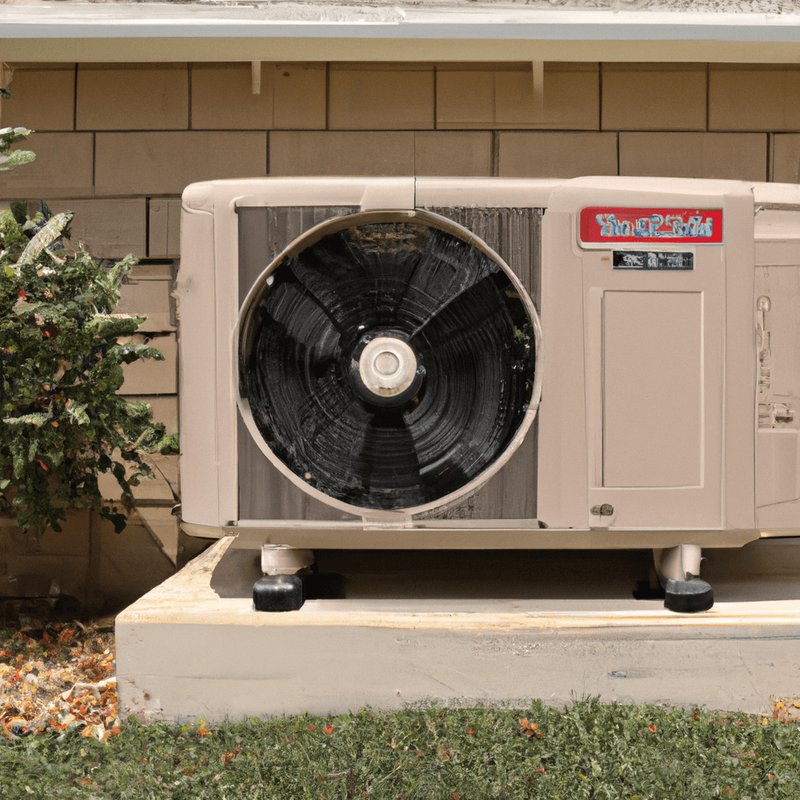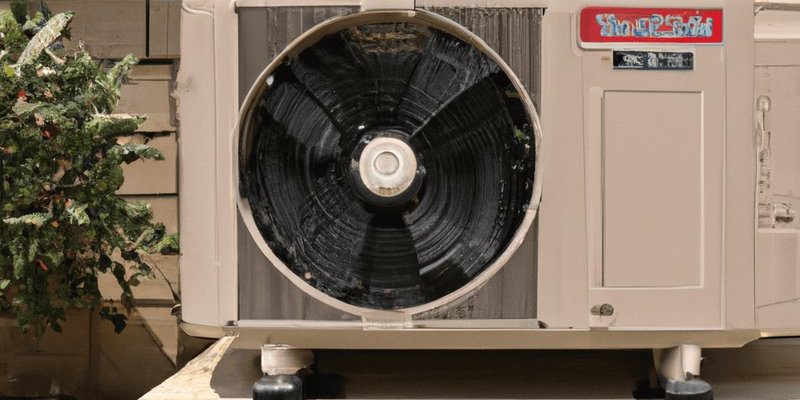
Honestly, HVAC warranties can sound like they’re written in a secret code. Between coverage periods, parts lists, and “limited” this or “conditional” that, it’s easy to feel lost. But Goodman—the Texas-based brand known for making reliable ACs, furnaces, and heat pumps—actually tries to keep things pretty straightforward. Whether you’ve just unboxed your new Goodman unit or you’re weighing your options before buying, understanding the warranty can save you headaches (and money) down the road.
Understanding the Basics of a Goodman HVAC Warranty
Here’s the thing: not every HVAC warranty is created equal. Goodman’s warranties are well-known for being pretty generous in the industry, but there are a few flavors to keep in mind. Most Goodman HVAC systems, whether it’s a furnace, air handler, or air conditioner, come with a standard warranty that covers certain parts for a set number of years. If you register your product with Goodman (usually within 60 days of installation), you often unlock even better protection—like an extended limited warranty.
At its core, the Goodman warranty is all about protecting you from defects in materials and workmanship. So, if a part breaks because it was faulty from the get-go—not because of a storm, power surge, or a squirrel chewing through wires—you’re covered. This means Goodman will provide a replacement part at no cost to you, though you might still pay for labor or troubleshooting by your HVAC technician.
It’s also worth mentioning: Goodman doesn’t cover everything. Warranties are mainly for the original owner of a residential system, which means if you move, the coverage may change or shrink. And—natural disasters, improper installation, or plain old wear and tear? Not covered. But don’t worry, we’ll get deeper into what’s in and what’s out soon.
The Different Types of Goodman HVAC Warranties
You might be wondering, “Isn’t a warranty just a warranty?” But Goodman offers a couple of different types, and the details matter. First up is the *basic limited warranty*, which usually covers major parts—like the compressor, coils, and internal functional parts—for five to ten years, depending on the model. This is your minimum protection, and it kicks in automatically, no registration needed, just for buying a Goodman unit.
If you want the best possible coverage, Goodman recommends *registering your product online*. Do this within 60 days after installation, and you’ll often get a *registered limited warranty*, which generally stretches the coverage to 10 years for most parts. Some high-efficiency models even offer a *lifetime compressor limited warranty*—if the compressor fails, Goodman supplies a new one for as long as you own the home.
There are other flavors, too—like *lifetime heat exchanger limited warranties* on select furnaces, or *unit replacement warranties,* which promise a new unit if key parts fail within certain years. The trick is to check your specific model’s documentation and see which ones apply.
What Parts Are Actually Covered?
Let me break it down: Goodman’s warranty is mostly about *parts*, not labor. That means if your air conditioner’s compressor calls it quits because of a manufacturing defect, Goodman will ship out a new one. But you’ll still pay your technician for diagnosing the issue, swapping out the part, and handling the grunt work.
Here’s a simple way to think about what’s included:
- Compressor: The “heart” of your AC or heat pump. Often covered for 10 years (sometimes for life on select models).
- Coils: Both evaporator and condenser coils are usually protected under the standard parts warranty.
- Functional Parts: Things like relays, control boards, and valves. These are generally covered for five to ten years, depending on your exact model and registration.
- Heat Exchanger: In gas furnaces, this vital part may have a lifetime limited warranty on some models.
Notably, *accessories* like thermostats, air cleaners, or zoning equipment may have separate, shorter warranties. And if your system needs a remote, code sync, or a battery reset—those troubleshooting items aren’t typically included in standard parts coverage.
What’s NOT Covered: Common Exclusions and Limitations
Every warranty has fine print, and Goodman is no exception. Here’s where things get real: the warranty doesn’t cover everything that might go wrong. If your system fails because of a lightning strike, flood, or shoddy installation, Goodman won’t pay for repairs or parts. Same if a DIY tune-up goes sideways, or if you forget to replace the battery in your thermostat and your system stops responding to the remote.
Other exclusions might surprise you:
- Labor Costs: You still pay for the technician’s time to diagnose and fix your system, even if the part is free.
- Refrigerant: The cost of refrigerant (or recharging it) is usually on you, not covered by the warranty.
- Cosmetic Damage: Dings, dents, and scratches don’t count.
- Improper Use or Maintenance: Skipping routine care, or ignoring troubleshooting steps, can void your warranty.
Always read the actual warranty certificate for your model and ask your installer about details—because once you need service, surprises aren’t fun.
How to Register and Maintain Your Goodman Warranty
So, you’ve got your Goodman unit installed—now what? Here’s how you lock in that registered warranty: *Register your unit online within 60 days.* It’s pretty painless: just visit the Goodman website, enter the serial and model numbers, and fill in your info. Don’t miss this step. If you don’t register, you might lose out on several years of extra coverage.
Maintaining your warranty is also crucial. Goodman expects that your system is installed by a licensed HVAC pro and that you keep up with routine maintenance (think: changing filters, scheduling annual checkups, and keeping the area around your system clear). Pro tip: save your receipts and invoices as proof of maintenance—if you ever need to file a claim.
If your system starts acting up—like remote syncing issues, or a code error pops up—try basic troubleshooting first. Some problems (blown fuse, dead battery, dirty filter) aren’t warranty matters, but your installer or a qualified technician should be able to help if you hit a wall.
How to Make a Warranty Claim with Goodman
Let’s face it, nobody wants to deal with warranty claims—but if you need to, knowing the process makes life easier. First, contact the HVAC company or installer who put in your Goodman system. They’ll help diagnose the problem, decide if it’s a warranty issue, and handle the paperwork. You can’t usually deal directly with Goodman as a homeowner; everything goes through a licensed contractor.
If the part in question is covered and you’re within your warranty window, the contractor will order the replacement part under Goodman’s policy. You should expect to pay for labor, and possibly any troubleshooting time or refrigerant. Some dealers might offer labor coverage plans for an extra fee, but that’s separate from Goodman’s standard warranty.
Patience helps: parts sometimes take a few days to arrive, so plan accordingly. And if you’ve moved or sold your house, double-check whether your warranty is still active—most Goodman warranties are for the original homeowner only.
Goodman Warranty vs. Universal or Third-Party Coverage
Here’s a common question: Given all these rules and fine print, why not just grab a universal HVAC warranty or a third-party service plan? Well, Goodman’s warranty is tailored for their specific systems, which means parts will always match, and coverage is clearer. Universal warranties from big-box stores or insurance companies might fill in some gaps—like labor or accidental damage—but can also come with extra paperwork, costs, and sometimes confusing “gotchas.”
If you’re someone who likes having *total* peace of mind, a supplemental service contract (covering labor, batteries, or remote troubleshooting) might be worth the extra money. But for most homeowners, Goodman’s built-in coverage is strong as long as you follow the rules.
Think of the Goodman warranty like a sturdy umbrella: it won’t stop every storm, but for parts failures, it’s better protection than most.
Why Knowing Your HVAC Warranty Matters
Here’s why this all matters: HVAC repairs aren’t cheap. The last thing you want is to be stuck without heat or AC because you didn’t know your warranty details—or lost coverage over something simple, like forgetting to register. If your system needs a reset, sync, or battery swap, you might be on your own. But when bigger, expensive parts need replacing, knowing exactly what Goodman covers means less stress and fewer surprises.
Plus, when it’s time to reset your system or call for help, understanding the boundaries of your coverage helps you troubleshoot smarter and save time (and money). No warranty is perfect, but Goodman’s approach aims for clarity, fairness, and a pretty solid safety net for your home comfort investment.
So, next time the subject of an HVAC warranty comes up at a neighborhood barbecue or during a home inspection, you’ll be the one who can say, “Actually, here’s how the Goodman warranty works—and here’s what you really need to know.” If that doesn’t make you the hero of the day, I don’t know what will.
